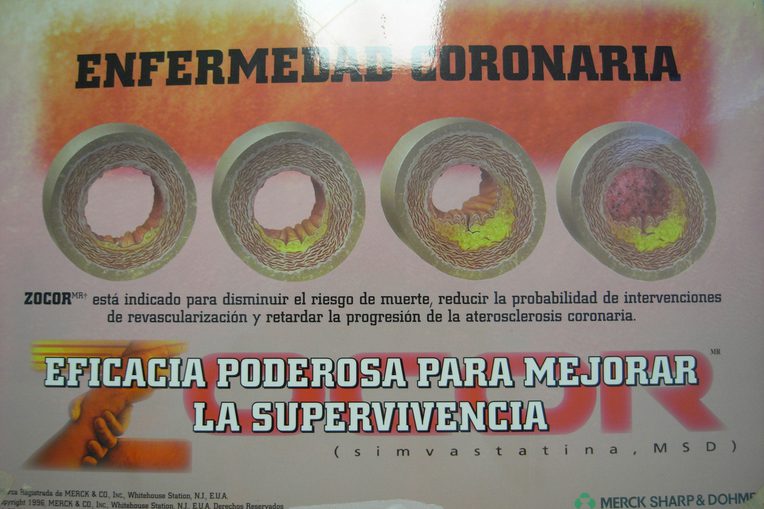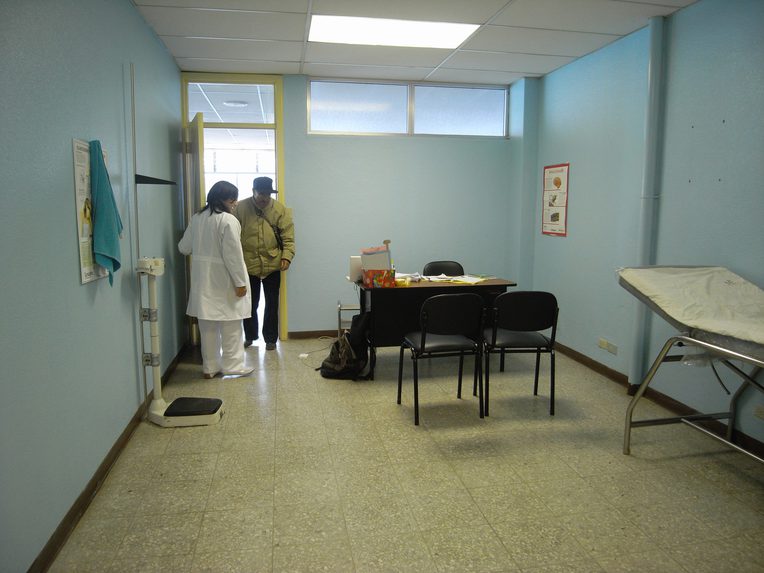Care: Provocation
From the Series: Care
From the Series: Care


Since these are Field Notes, let’s take up the question: what is the field of care?
Care, many have argued, does not follow universal principles but must be situated.1 But what is it to be situated? How can we know when a situation starts and stops, which boundaries constrain it, and through which does it extend? “It depends on the context” (Mol 2008, 63) is a good answer, an answer that transforms generalities into specificities and forces engagement with the immediate details and textures of the problem at hand. Yet in matters of care, the context is not often obvious nor the problem singular.2
There is possible slippage to the theoretical framing of care as situated because of the way in which the clinical setting tends to situate its care. The clinic locates care within bodies, cellular tissue, organs, or brains. It anatomizes, internalizes, and individualizes (Clarke et al. 2003), treating something small or specific—heart, liver, blood, cholesterol—in the hope that this will improve the broader health of the body, therein defined, that contains these organs. It attends to the local, the emergency, because, when faced with a sick patient’s suffering, how could it not?3

In my research on obesity in Guatemala, people entered the hospital’s outpatient treatment room, stepped on a scale, and were then asked about the specific concern that brought them there. Clinical intimacy was focused intimacy: How much did you eat yesterday? How much do you weigh? How do you feel right now? Histories that could be charted were important. Stories that could be told (fairly quickly) were shared. Details that could be kept track of were added together, a diagnosis made, and a treatment thereby determined. Personalized recetas, a word meaning both prescription and recipe, were handed out in the hope of encouraging the individual to eat more carefully, and then the patient would leave. Practitioners never, in all my months there, spoke about trade agreements or the land on which food was grown. Some would have thought it careless—even cruel—to speak of these seemingly distant things to a patient, literally situated across a desk, whose pain was immediate.4
But if careful, healthy, eating was the prescribed treatment for obesity, in practice this remained impossible to contain within a prescription. In everyday life (including that of the clinic), careful eating was not a stable thing. Even if considered purely from the standpoint of nutrition science: Care was eating vegetables because they had vitamins. Care was eating chips because vegetables might cause diarrhea. Care was eating packaged food because produce was awash in pesticides. Care was eating non-processed food because chemicals used in processing were toxic. It was eating a lot, to be big and strong. And also eating less, to lose weight.
Careful eating emerged in people’s lives as a composite of various, and sometimes contradictory, concerns. Care located in one place could be devastating in another; care now might later be deadly. Here are two particularly insidious examples of how care became unraveled in space and time:
Care entailed maternal fortification that aided fetal development, but public health scientists have begun to voice concern that unborn infants in Guatemala should not become too big too fast, since many Guatemalan women birth at home. Causing death in childbirth is certainly not caring. (One scientist I spoke with recently referred to the possible impacts of “good” prenatal nutrition as: “Genocide at an unimaginable scale.”)5
The increased production of vegetables where I worked—largely for export to international consumers, who, in the shadow of obesity prevention programs, want to eat well—has been enabled by the use of heavy pesticides, linked in some research to increased rates of obesity years after exposure.6

It might be tempting to ethnographically locate care within a clinic, for this is where treatment is obvious. It might similarly be tempting to approach health through a study of medicine— to look for obesity care, for example, in the work of doctors (and not in soils and seeds). But these field notes suggest that the immediacies and emergencies in need of care might be quite different for anthropology than clinical medicine. In the study of care, the “good” site may be less relevant than the way it is situated.
It is critical here that the ethnographic practice of situating care is not simply unlike, but often runs counter to the clinical act of situating care. While clinical care will localize, individualize, and cut off, ethnography hopes to figure care as an expansion: the pursuit of connections (Dumit forthcoming; Haraway 1988). Breaking singular truth apart, it asks: for whom does it matter, and especially, into what politics does this care strategy—and its description—aim to interfere? It does not prescribe, not even to those who have traveled far and waited long for an answer. Or maybe it will, strategically, because this is what the situation calls for.
Which brings us back to the idea that care “depends on the context” which brings us back to my provocation. What strategies do we have for assessing the context of context? What techniques can help us evaluate if, for whom, and when care works? Without the pretense of universal laws to direct our inquiries, upon what else might we base our claims? What boundaries do we evoke in our judgments? What – and whose – are the terms of these boundaries? And how do we go about writing these qualifications into the stories we tell?
1. See, for different versions of this argument, Mol et al. (2010), de la Bellacasa (2011), Haraway (1988), Stengers (2005), and Heuts and Mol (2013).
2. For a classic inquiry into the where and how of context, see Marilyn Strathern (1996).
3. For how context is approached in different research practices see a recent special issue edited by Kristin Asdal and Ingunn Moser (2012). For a discussion of the implications of figuring fieldsites as either multiple or arbitrary see Candea (2007). For examination of “global” situations and an unpacking of the categories of “when” and “where” see Tsing (2000).
4. For more on care in times of crisis see Redfield (2005).
5. For analysis of the confluence of cruelty and care see Ticktin (2011), Fassin (2005), and Fanon (1978).
6. I describe this further in Yates-Doerr (2014). For more on eating and exposure see Landecker (2011).
Asdal, Kristin, and Ingunn Moser. 2012. "Experiments in Context and Contexting." Science, Technology & Human Values 37, no. 4:291–306.
Candea, Matei. 2007. "Arbitrary Locations: in Defence of the Bounded Field-Site." Journal of the Royal Anthropological Institute 13, no. 1:167–84.
Clarke, Adele E., et al. 2003. "Biomedicalization: Technoscientific Transformations of Health, Illness, and U.S. Biomedicine." American Sociological Review 68, no. 2: 161–94.
de la Bellacasa, Maria Puig. 2011. "Matters of Care in Technoscience: Assembling Neglected Things." Social Studies of Science 41, no. 1: 85–106.
Dumit, Joseph. Forthcoming. "Writing the Implosion: Teaching the World One Thing at a Time." Cultural Anthropology 29, no. 2.
Fanon, Franz. 1978. "Medicine and Colonialism." In The Cultural Crisis of Modern Medicine, edited by J. Ehrenreich. New York: Monthly Review Press.
Fassin, Didier. 2005. "Compassion and Repression: The Moral Economy of Immigration Policies in France." Cultural Anthropology 20, no. 3: 362–87.
Haraway, Donna. 1988. "Situated Knowledges: The Science Question in Feminism and the Privilege of Partial Perspective." Feminist Studies 14, no. 3: 575–99.
Heuts, Frank, and Annemarie Mol. 2013. "What is a Good Tomato? A Case of Valuing in Practice." Valuation Studies 1, no. 2: 125–46.
Landecker, Hannah. 2011. "Food as Exposure: Nutritional Epigenetics and the New Metabolism." BioSocieties 6, no. 2: 167–94.
Mol, Annemarie. 2008. The Logic of Care: Health and the Problem of Patient Choice. New York: Routledge.
Mol, Annemarie, Ingunn Moser, and Jeannette Pols, eds. 2010. "Care in Practice: On Tinkering in Clinics, Homes, and Farms." Rutgers: Transcript.
Redfield, Peter. 2005. "Doctors, Borders, and Life in Crisis." Cultural Anthropology 20, no. 3: 328–61.
Stengers, Isabelle. 2005. "Introductory Notes on an Ecology of Practices." Cultural Studies Review 11, no. 1: 183–96.
Strathern, Marilyn. 1996. "Cutting the Network." Journal of the Royal Anthropological Institute 2, no. 3: 517–35.
Ticktin, Miriam Iris. 2011. Casualties of Care: Immigration and the Politics of Humanitarianism in France. Berkeley: University of Californai Press.
Tsing, Anna. 2000. "The Global Situation." Cultural Anthropology 15, no. 3: 327–60.
Yates-Doerr, Emily. 2014. "Obesity Science and Health Translations in Guatemala: Engagement in Practice." Anthropology Now 5, no. 1:3–14.